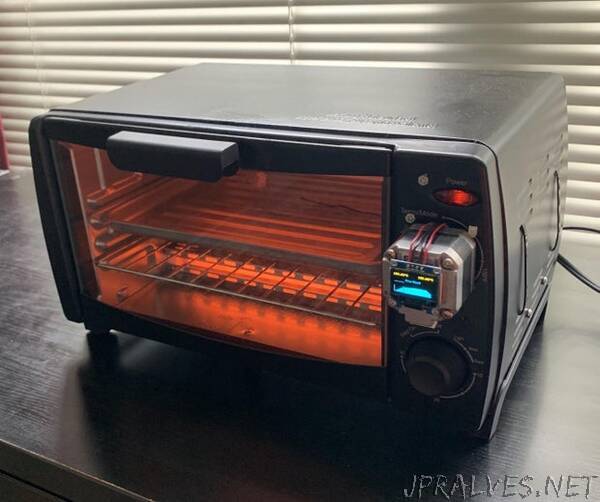
“Hobbyist PCB making has become much more accessible. Circuit boards that contain only through-hole components are easy to solder but the size of the board is ultimately limited by the component’s size. As such, utilizing surface mount components enable a more compact PCB design but is much more difficult to solder by hand. Reflow ovens provide a method that makes SMD soldering significantly easier. They work by cycling through a temperature profile that provides a consistent escalation in temperature which melts the solder paste underneath the surface mount components. Professional reflow ovens can be expensive especially if they are used on an occasional basis. My goal was to create an automatic reflow oven from a $20 toaster oven.
My plan was to use a stepper motor to rotate the temperature dial in a programmed way that will slowly escalate the temperature to melt the solder paste. I will attempt to mimic a specific reflow profile based on the solder paste I am using. Once the oven reaches a maximum temperature (melting point of the solder), the temperature dial will rotate backwards to reduce the temperature in the oven. All of this will be controlled by an arduino and displayed on an OLED screen. The ultimate goal is to load the oven with PCBs and components, press a single button, and have all of the components soldered without any outside adjustments or monitoring.
Supplies:
Arduino 5V pro mini
Stepper Motor
A4988 Stepper Motor Driver
MAX31855 Thermocouple
128x64 OLED display
2x 6mm push buttons
Limit switch
3 NPN transistors
12V power supply
5 1K resistors
4 10K resistors
M3 bolts and nuts
machine screws
hex coupling nut”
